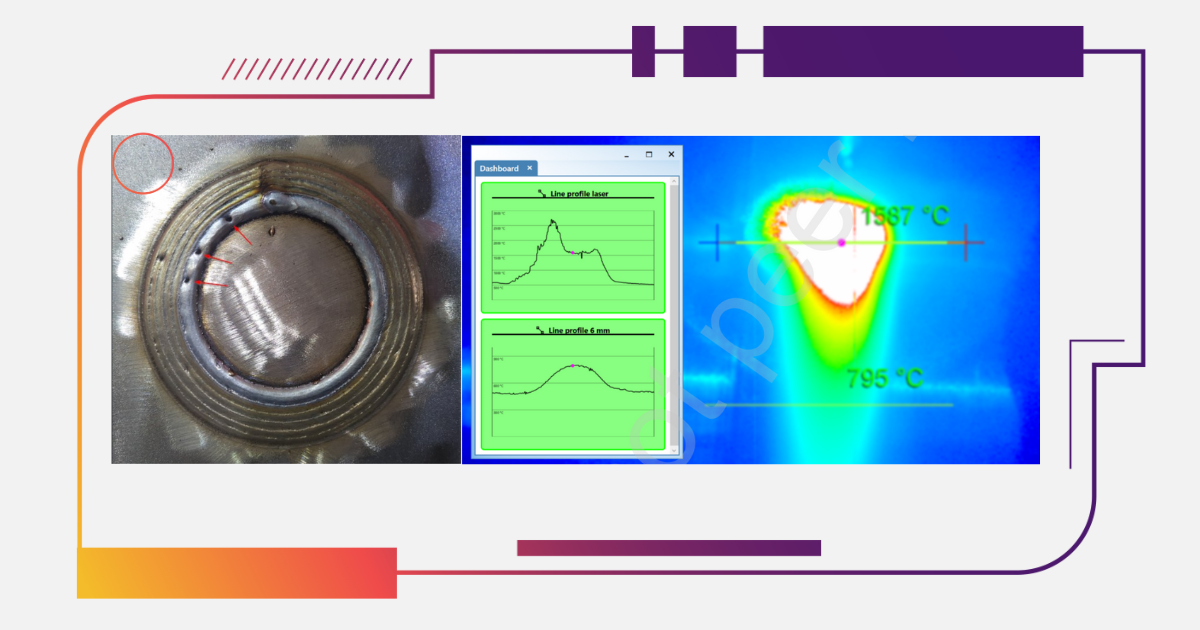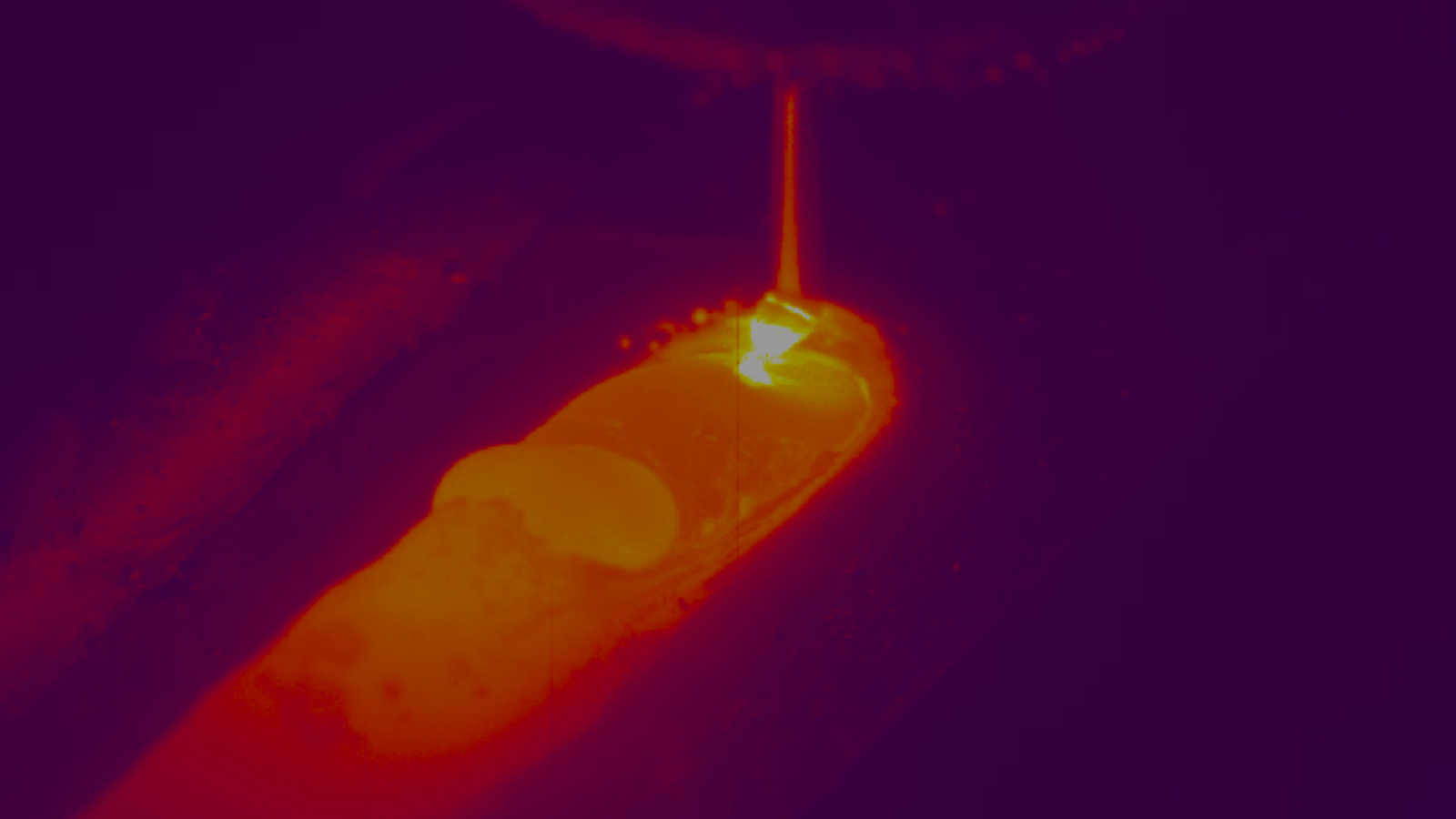The cooling rate plays a pivotal role in determining the microstructure of metals, particularly steels, during processes such as welding and metal additive manufacturing (Metal AM). The thermal cycle—rapid heating followed by cooling—affects phase transformations, mechanical properties, and residual stresses within the material. Understanding and controlling cooling rates are critical for achieving desired material properties, ensuring structural integrity, and preventing defects.
How Cooling Rates Influence Microstructure in Steels
The microstructure of steels transforms during cooling based on the rate of heat extraction. These transformations include the formation of ferrite, bainite, and martensite, each of which exhibits distinct mechanical properties.
| Cooling Rate | Microstructure | Effect |
|---|---|---|
| Slow Cooling Rates | Slow cooling promotes the formation of ferrite and pearlite, resulting in softer and more ductile materials. | Ferrite provides ductility, while pearlite offers moderate strength and toughness, making the material suitable for low-stress applications. |
| Moderate Cooling Rates | At intermediate cooling rates, acicular ferrite and bainite phases dominate. | Acicular ferrite enhances strength and toughness due to its fine-grained, interlocking structure. Bainite further contributes to improved strength without excessive brittleness. |
| Fast Cooling Rates | Rapid cooling leads to the formation of martensite, a hard and brittle phase. | While martensite provides high hardness and strength, it significantly reduces ductility and increases susceptibility to cracking. |
Measuring Cooling Time for Precise Microstructure Control
The cooling time between key temperature ranges, such as t8/5 (800°C to 500°C) or t12/8 (1200°C to 800°C), is a critical metric in welding and Metal AM. Traditionally, cooling rates have been estimated using theoretical models, which often relied on assumptions about material properties and geometry. However, inaccuracies in these methods often compromised weld quality.
To address these challenges, new tools and technologies on the market, such as Xiris’ XIR-1800 Thermal Camera, provide a revolutionary approach to real-time cooling time measurement. Designed for precision, such an advanced tool offers:
- Real-Time Measurements: Accurate, dynamic monitoring of cooling times during welding and Metal AM using a calibrated thermal camera that provides a 2D map of temperatures on a real time basis.
- Elimination of Assumptions: Reduces reliance on theoretical calculations by providing precise temperature data across the full range of temperatures where metal transition phases occur.
- Customizable Ranges: Configurable for t8/5 (800–500°C), t12/8 (1200–800°C) or other customizable cooling times to suit various materials and applications.
The XIR-1800 thermal camera stands out for its accuracy and range of temperature measurement and its suitability for integration into modern welding and Metal AM workflows. Its ability to provide real-time measurements ensures consistent microstructure control, leading to superior material performance. Learn more about its features and applications here.
Impact of Cooling Rates on Mechanical Properties
Cooling rates significantly affect strength, hardness, and toughness. Faster cooling enhances hardness and strength but introduces brittleness and residual stresses, while slower cooling improves ductility but compromises strength. Precise control ensures optimal performance in critical applications.
The relationship between cooling time and hardness is another vital factor. Models such as Yurioka’s link t8/5 cooling times to hardness predictions, helping engineers optimize weld properties. Achieving the right balance ensures components meet performance requirements without sacrificing durability or strength.
Residual Stresses and Distortion
Residual stresses and distortion are key considerations in controlling the cooling rate. Rapid cooling often results in thermal gradients that can lead to hardened microstructures and increased risk of cracking. Conversely, slower cooling reduces stresses but may promote grain coarsening, affecting material strength. Understanding these dynamics is crucial to achieving structural stability.
| Cooling Rate | Impact on Residual Stresses | Effect on Distortion |
|---|---|---|
| Fast Cooling | High residual stresses due to steep thermal gradients. | Increases distortion and risk of cracking. |
| Slow Cooling | Lower residual stresses but may cause grain coarsening. | Reduces distortion but can compromise strength. |
Hardness Predictions Using Cooling Time
Residual stresses and distortion are key considerations in controlling the cooling rate. Rapid cooling often results in thermal gradients that can lead to hardened microstructures and increased risk of cracking. Conversely, slower cooling reduces stresses but may promote grain coarsening, affecting material strength. Understanding these dynamics is crucial to achieving structural stability.
| Cooling Rate | Predicted Hardness | Material Behavior |
|---|---|---|
| Faster Cooling | Higher hardness due to martensite formation. | Increased brittleness and reduced toughness. |
| Controlled Cooling | Balanced hardness with moderate phase transformation. | Optimal combination of strength and ductility. |
| Slower Cooling | Reduced hardness with ferrite and pearlite formation. | Enhanced ductility but lower overall strength. |
 The effect of the t8/5 cooling time on S960 high-strength low-alloy steel (right) and the tested thermal cycles (left) as reported by [2]. Longer cooling time led to a reduction in the yield and tensile strength.
The effect of the t8/5 cooling time on S960 high-strength low-alloy steel (right) and the tested thermal cycles (left) as reported by [2]. Longer cooling time led to a reduction in the yield and tensile strength.
Applications of Cooling Rate Management
1. Metal Additive Manufacturing (Metal AM)
Cooling rates in Metal AM processes, such as Wire Arc Additive Manufacturing (WAAM), vary layer by layer. Real-time cooling rate control ensures uniform properties across the entire build, preventing warping and defects.
2. Welding Applications
Industries such as pipelines, automotive, and aerospace rely on precise cooling rate management to ensure weld integrity and performance.
3. Structural Components
Large structural applications, like bridge supports and building frameworks, require controlled cooling to prevent distortions and ensure material strength.
4. Precision Tooling
Tools and moulds demand high hardness and wear resistance, achieved by optimizing cooling rates for martensitic microstructures.
5. Advanced Steel Grades
High-performance steels used in engineering require careful cooling to balance toughness, strength, and resistance to cracking.
Xiris Solutions for Real-Time Cooling Rate Monitoring
Xiris offers the XIR-1800 Thermal Camera and Cooling Rate Tool, providing a comprehensive solution for thermal monitoring:
- Real-Time t8/5 Calculation: Ensures accuracy during welding and Metal AM processes.
- Travel Speed Measurement: Integrates motion data with temperature readings for automatic movement speed for more accurate advanced analyses.
- Enhanced Process Control: Optimizes cooling rates for improved mechanical properties and reduced defects.
Conclusion
Cooling rates significantly impact the microstructure and mechanical properties of steels during welding and Metal Additive Manufacturing. By leveraging advanced tools like the XIR-1800 Thermal Camera and Cooling Rate software tool, manufacturers can achieve precise control over their welding cooling rates, promoting more consistent fabrication quality and performance. As industries continue to demand higher quality standards in fabricated parts, real-time cooling rate measurement stands as a transformative solution for achieving optimal results.
XIR-1800 Thermal Camera System
Real-time temperature measurement with an exceptionally clear view of your process.
Download Datasheet



.gif?width=288&height=364&name=XVC%201800%20gif%20Landing%20page%20(1).gif)
.png)


